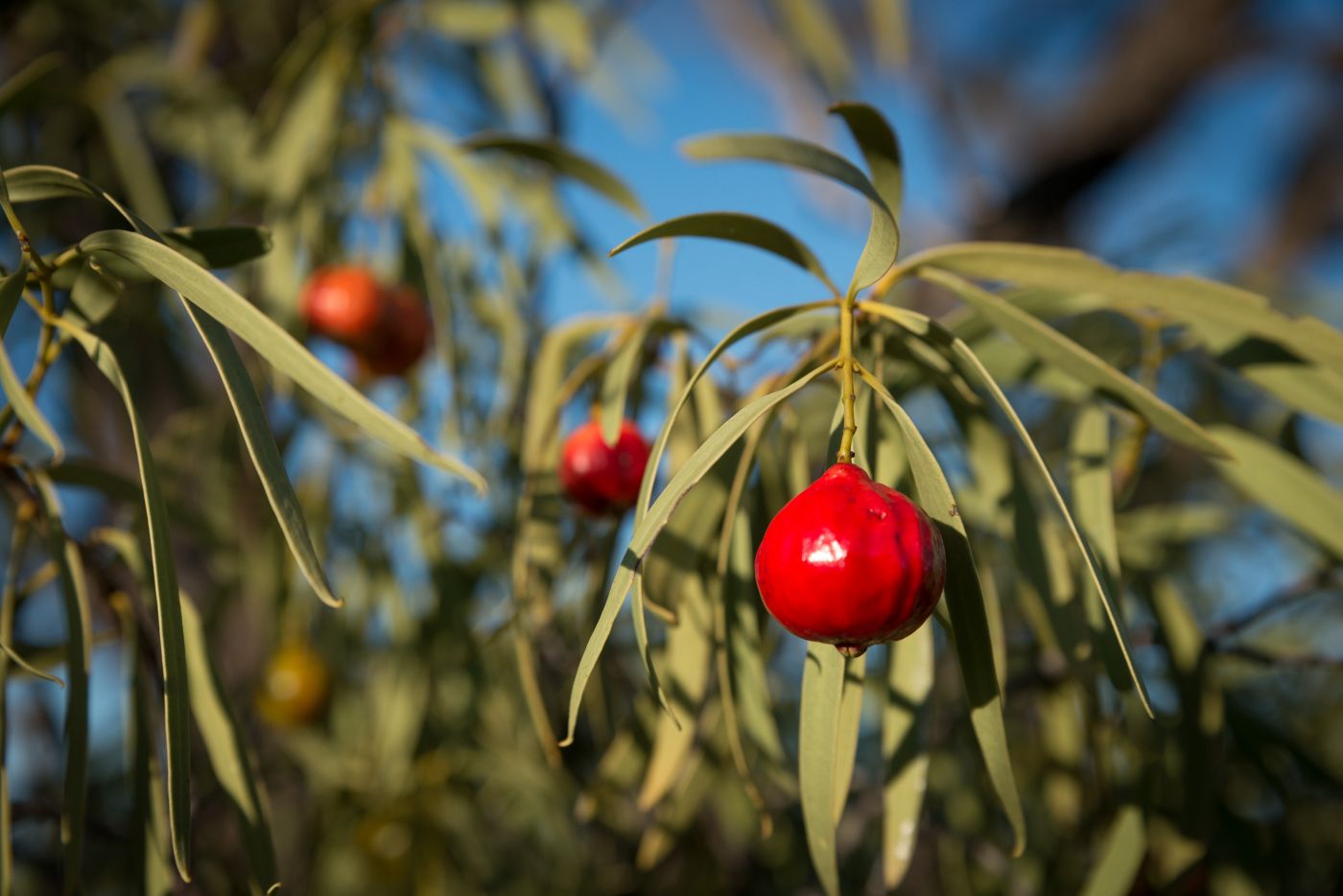Top 5 Climate-Resilient Enterprise Ideas for New South Wales
Top 5 Climate-Resilient Enterprise Ideas for New South Wales
As climate variability intensifies across New South Wales—with hotter days, more frequent droughts, shifting rainfall patterns and emerging pests—farmers are increasingly challenged to maintain viable production. According to the NSW Government, decreasing winter and spring rainfall, more intense rainfall events, rising day and night temperatures, and harsher fire weather are among the projected trends. (NSW Department of Primary Industries)
In this changing landscape, enterprises that can absorb shocks, require fewer external inputs, and adapt to extremes offer greater hope. Below are five enterprise ideas with strong climate resilience potential for NSW, including strengths, trade-offs, and suggestions for trialling.
NSW Climate Zones & Implications for Enterprise Selection
Before exploring enterprises, it is useful to understand the broad climate zones in NSW, how they differ, and which options may suit certain zones better.
-
NSW includes coastal zones, tablelands, western slopes, inland and semi-arid regions.
-
Coastal and near-coastal zones often benefit from more moderated temperatures, higher humidity and more reliable rainfall, but also face risks of extreme rain, storms and heat stress.
-
Inland and western zones face more acute rainfall variability, higher potential evaporation, greater heat stress, and water scarcity.
-
As climate change progresses, many regions in NSW are expected to receive less winter & spring rainfall, more variable and extreme rainfall events, and higher temperatures. (NSW Department of Primary Industries)
Therefore, selecting enterprises must be guided by your local rainfall regime, soil type, access to water, frost/heat risk, and distance to markets. What works in a coastal or higher rainfall zone may struggle in western NSW, and vice versa.
Below is a table showing NSW zones from coastal/humid → tablelands / slopes → inland / semi-arid and overlaying which enterprise types might suit each.
| Coastal / humid / higher rainfall | Moderate temperatures, risk of storms/flood, humidity, disease pressure | Protected cropping; native / bushfoods; mixed systems | Use shade, ventilation, disease management |
| Tablelands / slopes | Cooler winters, frost risk, moderate rainfall | Perennial shrubs, native foods, woody biomass, mixed enterprises | Choose frost-tolerant species |
| Inland / western / semi-arid | High heat, rainfall variability, water scarcity | Woody biomass, native drought species, biomass/energy crops, conservation / nature repair | Use drought-tolerant species and water harvesting |
*These are directional suggestions. Always pilot, test, and adapt locally.
With that climate zoning in mind, here are five enterprise ideas with good resilience potential across NSW.
Top 5 Climate-Resilient Enterprise Ideas for NSW
1. Woody Biomass / Energy Tree Crops
What they are: Fast-growing trees or shrubs raised on 3–5 year rotations (or coppice systems) to supply biomass for energy, biofuels, pellets, feedstock for biochar or emerging bioproduct industries (e.g. bioplastics, cellulose). Carbon credits may be possible if projects meet certain sequestration or emissions-reduction standards.
Why resilient:
-
Once established, woody perennial species generally need less frequent replanting, deeper root systems, and can better survive dry periods.
-
Can often be planted on marginal or less productive land not suited for intensive cropping.
-
Can offer co-benefits: carbon sequestration, improved soil structure, erosion control and ecological buffers.
-
The NSW DPI supports biomass and bioenergy research and encourages low-emissions agriculture pathways. (NSW Department of Primary Industries)
Caveats / challenges:
-
Proximity to processing or energy end-users is crucial—transport costs can kill viability.
-
Species choice is critical—drought tolerance, coppice ability, pest resistance all matter.
-
Capital and establishment time are significant.
-
You must validate the market: who will pay for biomass, what specifications, and in what volumes?
Suggestions for NSW:
-
In inland or semi-arid zones, trial local eucalypt species or mallee types known for drought resilience.
-
On parts of land less suited for high-input crops, plant biomass corridors or blocks.
-
Combine biomass plantings with contour water harvesting or shade to reduce heat/evaporation stress.
2. Native / Bushfood / Indigenous Food Plants
What they are: Cultivation of native shrub or tree species producing edible or high-value products: bush fruits, nuts, herbs, botanicals (e.g. finger lime, quandong, lemon myrtle, native berries).
Why resilient:
-
Native species are adapted to local climatic variability and soil conditions, often more tolerant of drought, heat and lower water inputs.
-
Demand for “native foods” is growing in domestic and export markets.
-
They often require fewer chemical inputs and can integrate into mosaic plantings or agroforestry designs.
Challenges:
-
Slow establishment or maturity periods for certain species.
-
Smaller or niche markets; risk in scaling without reliable buyers.
-
Food safety, post-harvest handling, shelf life and compliance for edibles.
-
Genetic selection, propagation knowledge and variability.
Suggestions for NSW:
-
In coastal and mid-altitude zones, trial species with existing precedent (e.g. lemon myrtle, native berries).
-
Combine native food groves with other enterprises (e.g. biomass or conservation).
-
Focus on value-add (dried fruit, oils, packaging) to capture margin.
3. Protected / Controlled-Environment Horticulture
What it is: Growing higher-value crops (vegetables, herbs, small fruits) in greenhouses, tunnels, shade houses or controlled microclimate systems.
Why resilient:
-
These systems buffer crops from extremes (heat, sudden rainfall, frost) and allow more precise control over water and nutrients.
-
With sensor systems, growers can optimise inputs and reduce waste under stress.
-
There is capacity for higher margins to justify capital expense if risk is reduced.
Challenges:
-
High capital cost for structures, irrigation, climate controls.
-
Energy costs (cooling, heating, ventilation) can escalate in extreme weather.
-
Pest and disease pressure may intensify in confined systems, necessitating strict biosecurity.
-
Requires strong market access, skilled labor, and reliable logistics.
Suggestions for NSW:
-
Use modular or semi-open designs rather than fully sealed systems, especially in zones with high radiation.
-
Use shading, passive ventilation, thermal mass and smart sensor control to reduce energy loads.
-
Start small (pilot tunnels) to test local viability.
-
Consider high-value niche crops (microgreens, herbs, high-end vegetables) to justify investment.
4. Perennial Scenarios & Mixed Plant Systems
What it is: Using perennial shrubs, grasses, multi-species plantings, agroforestry, or mixed enterprise mosaics rather than annual monocultures.
Why resilient:
-
Deep-rooted perennials improve soil moisture retention, reduce erosion and buffer against seasonal swings.
-
Multi-species systems spread risk—different species perform under different conditions.
-
Less need for yearly re-planting and disturbance, reducing exposure to extreme weather years.
Challenges:
-
Transition costs and reduced income in establishment years.
-
Complexity in managing mixed systems (species compatibility, competition, harvest timing).
-
Need local species trials and diversity planning.
Suggestions for NSW:
-
Use mixed species shrub plantings suited to your zone.
-
Combine perennials with native / bushfood species or biomass corridors.
-
Stagger plantings to allow phased transition.
5. Mosaic / Diversified Systems & Nature Repair Integration
What it is: Designing the property as a mosaic: combining production plantings, ecological zones, conservation corridors, windbreaks, buffer plantings, and integrating multiple enterprises rather than relying on one.
Why resilient:
-
Diversity is a strong resilience strategy: when one enterprise underperforms due to stress, others may help balance financial resilience.
-
Incorporating nature repair, biodiversity corridors, riparian plantings and ecological buffers improves landscape health, which in turn stabilises water, soil and microclimate.
-
Many regions support carbon, biodiversity, stewardship and ecosystem service markets.
Challenges:
-
Increased management complexity across enterprises.
-
It may take more time to see returns in some enterprise arms.
-
Infrastructure, logistics and scaling may be more challenging.
Suggestions:
-
Dedicate marginal areas or riparian zones to native repair, corridors or conservation.
-
Use buffer plantings or windbreak strips to moderate microclimates.
-
Phase design: start with a few enterprises and gradually expand.
-
Explore stacking of income: e.g., native corridors providing ecosystem service payments plus biomass or seed harvesting.
Which Ideas Suit Which NSW Zones?
|
Coastal / higher rainfall zones |
Protected cropping; native / bushfood; mosaic systems | Watch disease & humidity; use passive cooling; proximity to markets |
|
Tablelands / slopes |
Native / bushfood; woody biomass; perennial/multispecies systems | Frost tolerance and cold climate selections matter |
|
Inland / semi-arid zones |
Woody biomass; native drought species; mosaic with conservation / nature repair | Water capture, drought tolerance, species selection crucial |
|
Mixed climate / transition zones |
All 5 (depending on block) | Use pilot zones and trial across microclimates |
No single enterprise is immune to climate change—but by choosing longer-lived, low-disturbance, diversified, adaptive systems, farmers in NSW can build more resilient futures. Use your land, water and climate conditions as your guide. Begin with small pilots, learn fast, and lean on tools and support.
If you’re beginning to explore options outside of animal farming, you don’t have to navigate that change alone.
Farm Transitions Australia exists to help farmers plan their next chapter with dignity, clarity, and support — whether that means transitioning your land into horticulture, conservation, new enterprises, or an entirely new career path.
Because change doesn’t mean the end of your story — it’s the start of a new one.

